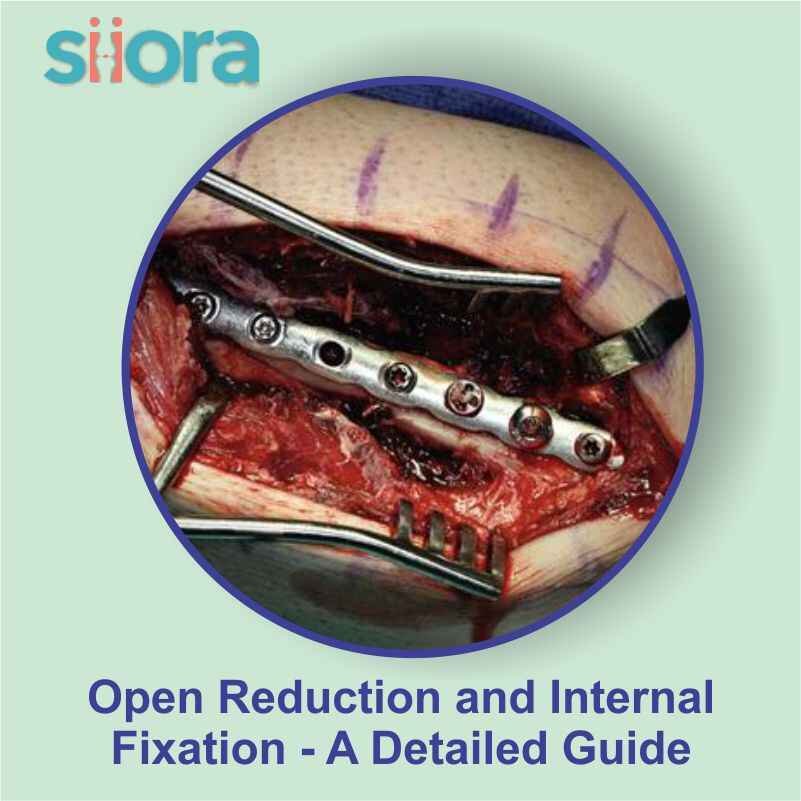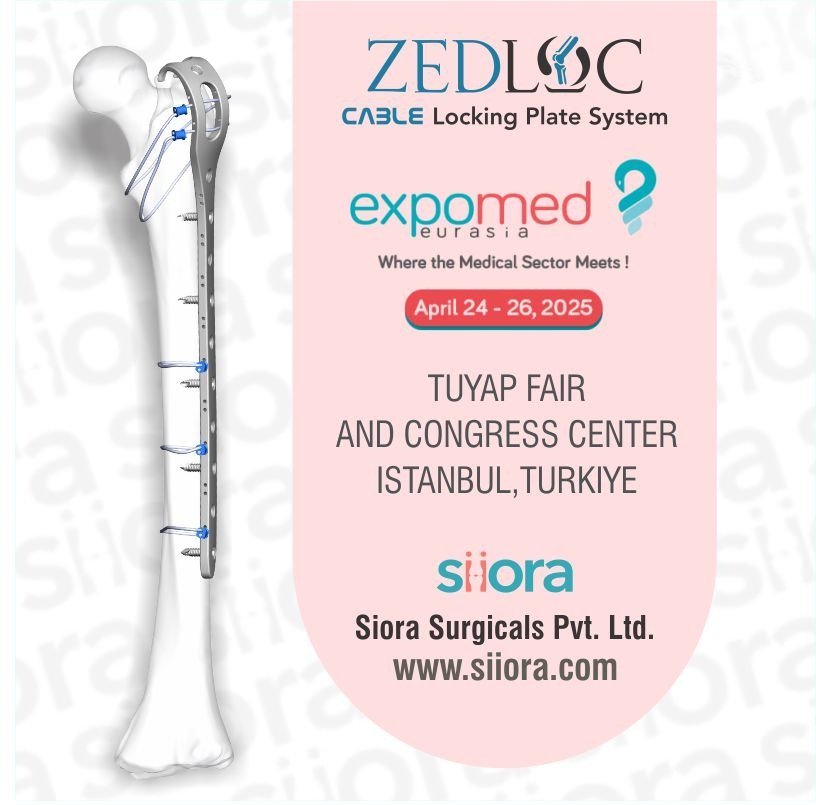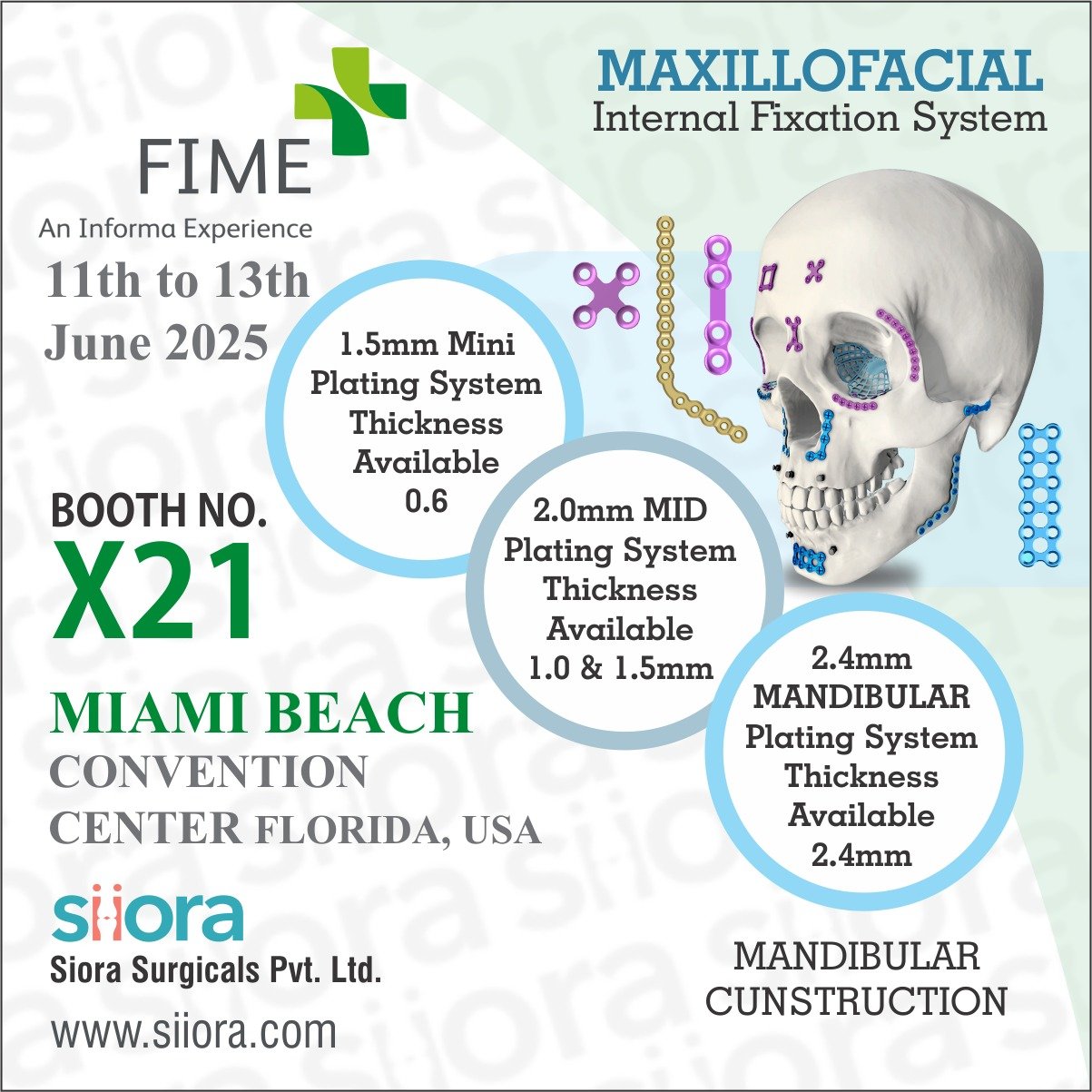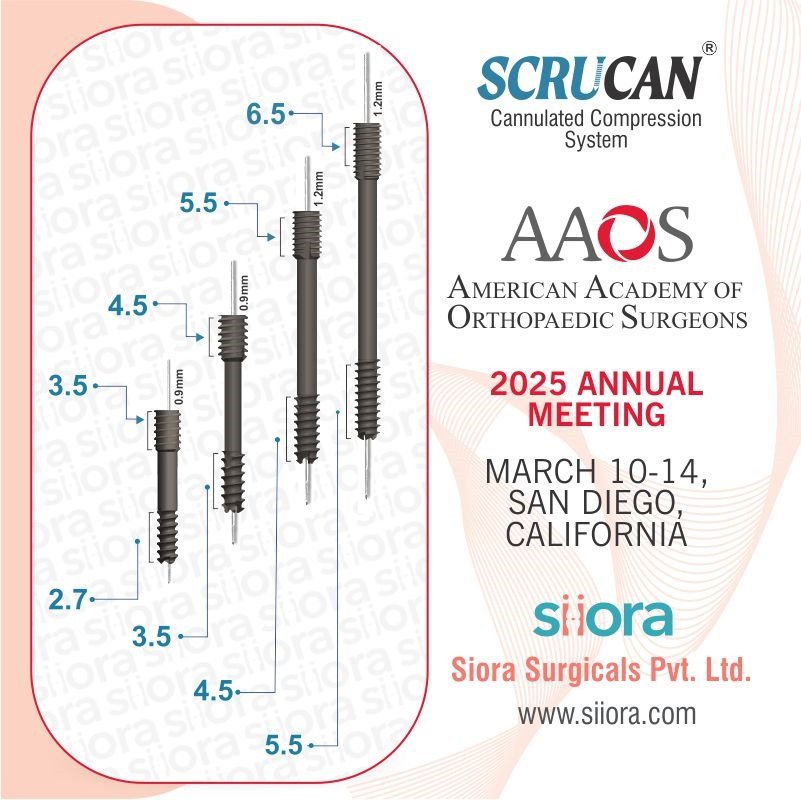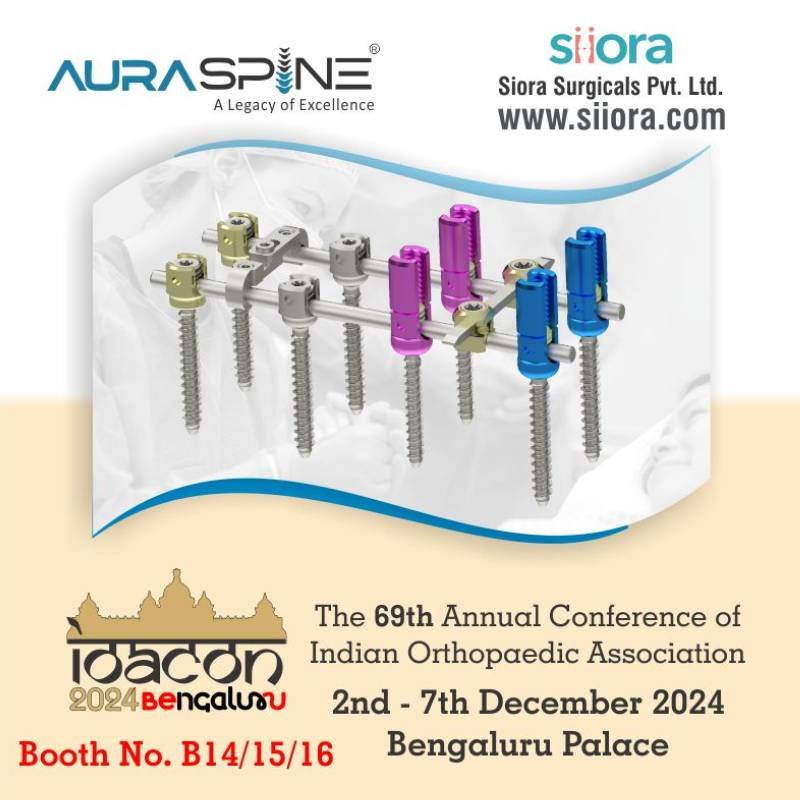Abbreviated as ORIF, open reduction and internal fixation is a surgical technique in the field of orthopedics. Among all surgeries that surgeons perform to treat fractures, ORIF is the most common. This surgery involves the use of orthopedic implants and instruments. The type of implants that surgeons choose depends on the type and severity of fractures. There are hundreds of different types of trauma implants and surgeons select accordingly.
In this post, we will discuss open reduction and internal fixation in detail along with when and how orthopedic surgeons perform this.
What is Open Reduction and Internal Fixation?
Severe orthopedic fractures require surgery and the technique used is known as open reduction and internal fixation (ORIF). ORIF is the option to treat fractures that orthopedic specialists cannot manage with the application of a cast or splint.
If we specifically talk about fractures that require open reduction and internal fixation, then those are unstable fractures with significant displacement. Besides this, fractures that involve joints also require surgical intervention. Let us see why we call this orthopedic surgery open reduction and internal fixation.
Open Reduction
When a bone breaks and the broken fragments move out of their place, it is important to realign them for proper healing. The process of realigning the fracture is “reduction”. In the case of mildly displaced fractures, the orthopedic specialist physically realigns the bone with force (closed reduction). Before that, the orthopedic specialist will give anesthesia. While on the other hand, severely displaced fractures require clear access to the bone for reduction. For that, the surgeon needs to make an incision. So, the process of reducing a fracture after making an incision is open reduction.
Internal Fixation
Now, after fracture reduction requires the use of orthopedic implants to hold it in the correct alignment for proper healing. For this, the surgeon will apply orthopedic plates, orthopedic screws, pins, wires, and rods. This is the process that we call internal fixation.
Hence, the steps that are involved in the surgical treatment of fractures name the surgery “open reduction and internal fixation.”
Why Open Reduction and Internal Fixation (ORIF) is the Choice of Surgery for the most severe fractures?
Fractures are common as anyone can experience the same. Sometimes, the fracture is not severe and simple closed reduction followed by the application of a cast or splint can fix that. But in other cases, the fracture is complex and surgery is the answer to that. In such scenarios, orthopedic surgeons prefer ORIF.
So, if someone has a fracture where the broken bone is significantly displaced or there are multiple fragments of the broken bone, open reduction and internal fixation is performed. Without that, the fracture cannot be treated and no other treatment option is there for such conditions.
Besides this, another case where ORIF will be on the cards is an open fracture. An open fracture is when the bone breaks and a broken bone fragment protrudes out of the skin. This means, there is direct contact between the internal structures of the body and the external environment. In such cases, the risk of infection is high, and if a timely medical assessment does not reach, severe complications may occur.
The best form of treatment in the case of open fractures is ORIF. In some cases, external fixation is the best option, especially when internal fixation is not feasible.
How do Orthopedic Specialists decide on ORIF?
Well, the decision to perform ORIF requires certain physical and imaging tests. Only after confirming the severity of the fracture, the orthopedic specialist can decide whether ORIF will be feasible or not.
At first, the healthcare service provider will perform a physical examination. This is to check visible signs that will include swelling, bruising, and tenderness. Besides this, the orthopedic specialist will also confirm the range of motion of the injured area. Based on the examination, the healthcare service provider will order imaging tests to confirm the severity of the condition. The imaging tests ordered will include:
- X-ray
- MRI
- CT Scan
- Bone Scan
Only after assessing these reports thoroughly, the orthopedic specialist will confirm that the fracture will need ORIF. The surgery is performed under anesthesia.
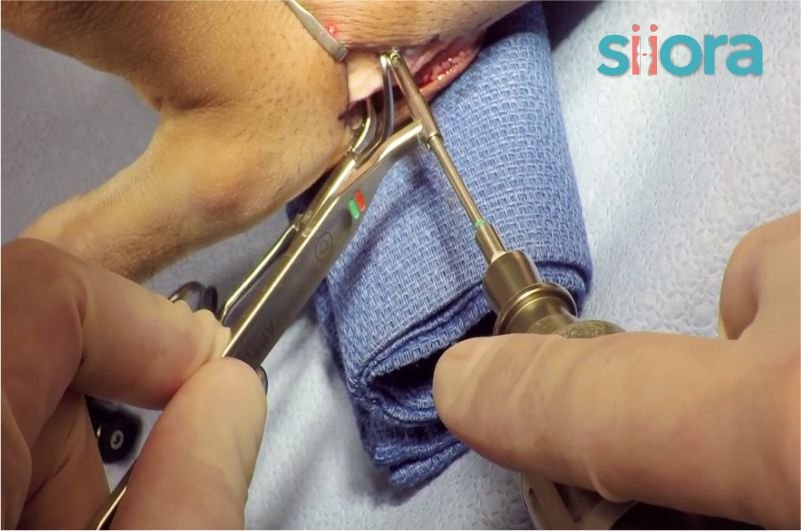
What to Expect During ORIF?
Open reduction and internal fixation might take several hours and depending on the severity of the procedure, the patient might require staying in the hospital for a few days to a few weeks.
Before the surgical procedure is carried out, the nurse will monitor the blood pressure, pulse, and breathing of the patient. This is important to ensure the safety of the patient during surgery. Besides this, the healthcare service provider will also perform a thorough check of the nerves near the fracture.
Only after the convincing test reports, the healthcare service provider will go for the surgery.
In some ORIF surgeries like arm fractures, the patient can go either on the same day or the next day after the surgery.
What the Recovery is Like After Open Reduction and Internal Fixation?
The patient needs to pay stern attention after the surgery to ensure a better and faster recovery. Well, if you talk about the recovery time after ORIF, then it varies. Certain factors decide how fast or slow the recovery of fracture will be. Let us have a detailed look at the factors:
The Severity of the Fracture
If the fracture is very severe, it might even take years for a complete recovery. On average, the patient recovers within 3 to 12 months post-surgery.
The Location of the Fracture
Fractures that involve the joint take a much longer time to heal. With that, multi-fragmented fractures also take time for complete healing.
The Patient’s Age
This is one of the biggest factors that play a key role in ensuring a quick recovery. Here, the theory is simple, fractures in the elderly heal slower than in young adults. In children, recovery is faster.
Underlying Health Problems
People with other health problems like osteoporosis, joint degradation, low bone density, and others also recover slower than fit adults.
Physical Therapy
Physical therapy is vital in ensuring a faster and better recovery. People who attend physiotherapy sessions seriously and follow the instructions given by the trainer experience better results. Such people not only recover faster but also regain previous-like strength and range of motion.
Cleanliness
Here, we mean the cleanliness of the surgical wound. This is because if the surgical wound is not cleaned as advised the risk of infection will be there. If occurred, the recovery will be delayed, and repeat surgery might be required. Make sure the surgical wound is covered and whenever cleaned, it should be done with washed hands.
To check the healing progress, the healthcare service provider will ask for periodic X-rays and physical examinations. If any abnormality is there, the orthopedic specialist will take corrective actions to manage that.
What Are the Risks with Open Reduction and Internal Fixation?
All surgeries carry mild, moderate, and severe risks but, not all patients experience the same. Still, certain precautions and measures are taken to avoid any serious complications. Above all, open reduction and internal fixation also have some associated risks. Here are some of the possible risks of ORIF:
- A bacterial infection could occur because of implanted hardware or the incision
- Internal bleeding
- Formation of blood clots
- Anesthetic allergic reaction
- Damage to nerves or blood vessels
- Ligament or tendon damage
- Partial bone healing
- Malunion
- Displacement of the orthopedic implant from its position
- Arthritis
- Tendonitis
- Persistent pain due to implant irritation
- Compartment syndrome
Here, if the implant moves out of its place or is damaged, the orthopedic surgeon needs to remove it. While on the other hand, in the case of improper bone healing, the orthopedic specialist will recommend repeat surgery.
Siora Surgicals Pvt. Ltd. is a reliable and experienced manufacturer of a CE-certified range of orthopedic implants and instruments. Operating for over 3 decades, the company has established a good presence in both national and international markets. Siora has served clients in over 40 countries and it keeps working hard to expand its network. The company is also a trustworthy OEM/contract manufacturing service provider across the globe.

